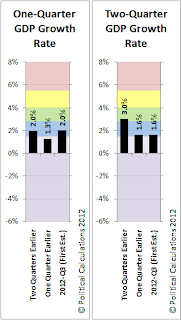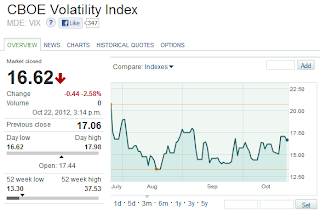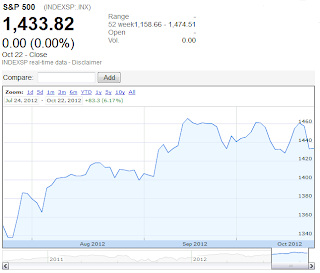How much more in taxes would you be willing to pay for the sake of reducing the risk of having to recover from the damage done by a natural disaster?
We're asking that question today as Hurricane Sandy has already done most of the damage it is going to do to the northeastern United States, but really, we're going to apply lessons learned back in 2005 from Hurricane Katrina. John Whitehead wrote in considering the cost of a flood-free New Orleans in the aftermath of that natural disaster:
From the NYTimes (New Orleans Floodplan Upgrade Urged):
Federal officials outlined plans yesterday for a significant improvement to the New Orleans flood-protection system by 2011, but said the total cost would be more than double the $7.1 billion that Congress has already appropriated for repairs and upgrades.
I'm wondering ... what is the breakeven willingness to pay that would justify this expense?
By spending an additional $7.6 billion, the Army Corps of Engineers could build higher, tougher floodwalls and gates to seal off waterways like the city’s enormous Inner Harbor Navigation Canal from storm surges, officials said. Permanent pumping stations at the mouths of the city’s drainage canals would block surging water from Lake Pontchartrain and effectively pump water out of the city during storms as well.
The officials said the upgraded system would result in a widespread reduction in water levels should the city be hit by the kind of flood that might have a 1 percent chance of occurring in any year. It would not eliminate flooding, however — rainwater could still accumulate to two or four feet in some sections of the city — and very intense storms could still do major damage.
Suppose the present value of costs (PVC) is $14.7 billion. The present value of benefits in perpetuity is:
- PVB = (P x B x N)/r
where the P is the annual probability of a flood, B is the annual individual level benefit, N is the population and r is the discount rate. According to the article, P = .01. According to my favorite mistake-free source, the greater New Orleans population is 1.2 million (the city population is 273k). The question is, what is the individual level benefit that equates PVB and PVC at various discount rates?
To be worthwhile, the present value of the benefits from such a project must be at least equal to the present value of its costs. Knowing that, there are two unknowns left in the benefits calculation: the value of the individual benefit that a person might enjoy from the project (and be both willing and able to pay each year in taxes in perpetuity to enjoy) and the discount rate.
The discount rate is something that is always changing, but in this case, it might properly be measured by the opportunity cost of loaning out money over a long period of time, which is a fancy way of saying that it should be tied to average long-term interest rates. The Army Corps of Engineers reports that its long-term discount rate in 2008 was 4.88%, however this value has ranged between 2.50% and 8.88% since 1957, with the average discount rate being 5.8%.
Using that 4.88% value, we now have enough information to build a tool to find out how much more each individual benefiting from this kind of project would have to pay in taxes to support it. We've entered the default numbers that would apply to making a flood-free New Orleans in our tool below (just change the values as you might need to consider other situations!):
In the default case, if only the 1,167,785 people of metropolitan New Orleans were responsible for paying for the $14.7 billion project to prevent damage from a natural disaster for which the odds of occurring in any given year is just 1%, each would have to pay an additional $61,429 annually on top of the taxes they pay today for every year going forward.
If we make this a statewide issue, where some 4,574,836 Louisianans would each get a permanently higher tax bill, the cost drops to $15,681 per person per year.
On a national scale, with 311,592,917 Americans sharing in the cost of making a flood-free New Orleans, each would need to pay an additional $230 in taxes each year.
But that would only take care of New Orleans, and specifically only benefit the people who reside within the boundaries of the improved levees. The project wouldn't provide much benefit for all the other Americans who live everywhere else.
Believe it or not, we know how this story has turned out! The funding to improve New Orleans' flood control infrastructure was approved and the U.S. government spent upwards of $14.6 billion to make a flood-free New Orleans. Reuters reports the results following Hurricane Isaac's aftermath in September 2012:
NEW ORLEANS (Reuters) - Thanks to $14.6 billion spent on new flood defenses, roughly $17,400 per resident, Clara Carey and her husband could afford to sit tight in their home when Hurricane Isaac pushed toward New Orleans last week.
"We're senior citizens, and we always said if another Katrina came, we wouldn't come back," said Carey, who lost nearly everything in the flooding that followed the 2005 hurricane and took two years to restore her home in the Gentilly neighborhood.
Isaac would be different, not only because the Category 1 storm was weaker than Katrina, but also because multibillion-dollar work on levees by the U.S. Army Corps of Engineers has given the city stronger protection against hurricanes.
[...]
"The good news is, the post-Katrina system, a $14.6 billion system the federal taxpayer paid for, performed very well," U.S. Senator David Vitter said. But flooding elsewhere "underscores that our work is not done by a long shot," he said.
Doing the math, the federal government's spending of $14.6 billion benefited just over some 839,000 residents of New Orleans, who reside within the boundaries of the city's improved flood control infrastructure. Reuters continues:
But Isaac laid bare an uncomfortable truth about the new and improved New Orleans, a tale of two populations - one of neighborhoods that stayed dry behind a world-class system of levees and flood walls and another of suburban communities that were inundated when their older levees failed.
In the Lower Ninth Ward, where a 20-foot (6-meter) wall of water tore homes off their foundations during Katrina, the federal levees held up under Isaac.
But on the north and west of Lake Pontchartrain in towns like Slidell and LaPlace, and in Plaquemines Parish to the south, residents saw widespread flooding that claimed a few lives, spurred rescues from rooftops and caused a surprising amount of damage.
And so it seems that at least several hundred thousand people who live just outside of New Orleans saw no benefit from the project, although they each are effectively paying an additional $230 per year for it along with all other Americans. Reuters quotes the Cato Institute's Chris Edwards on the cost-benefit mismatch problem:
"It's a huge amount of money spent to benefit people in an area of the country with a particular problem," Edwards said. "The problem is you have different people spending the money than the people who are being taxed to pay for the projects."
Edwards said that decisions by Congress to spend such large amounts in local areas is fundamentally unfair "because the money is allocated by politics" and not based on market demands.
"When you have a levee system in Louisiana that's 80 to 90 percent funded by taxpayers who live in other states, then policy makers have a hard time balancing costs and benefits," Edwards said.
Altogether, some 310,700,000+ Americans, each having to bear the burden of an additional $230 per every year going forward in higher taxes (or really government borrowings) to pay for the project, are finding they aren't sharing the benefits.
With the tab for rebuilding after Hurricane Sandy already being estimated to be more than $20 billion, that's a lot of money that might have been better spent to avoid damage in other places.
All in all, what this lesson from Hurricane Katrina demonstrates is the importance of federalism, which is the mechanism in the United States that best matches where the costs are paid to where the benefits are enjoyed. Upending that arrangement is just playing politics of the worst kind - seizing on tragedy for personal gain.



























